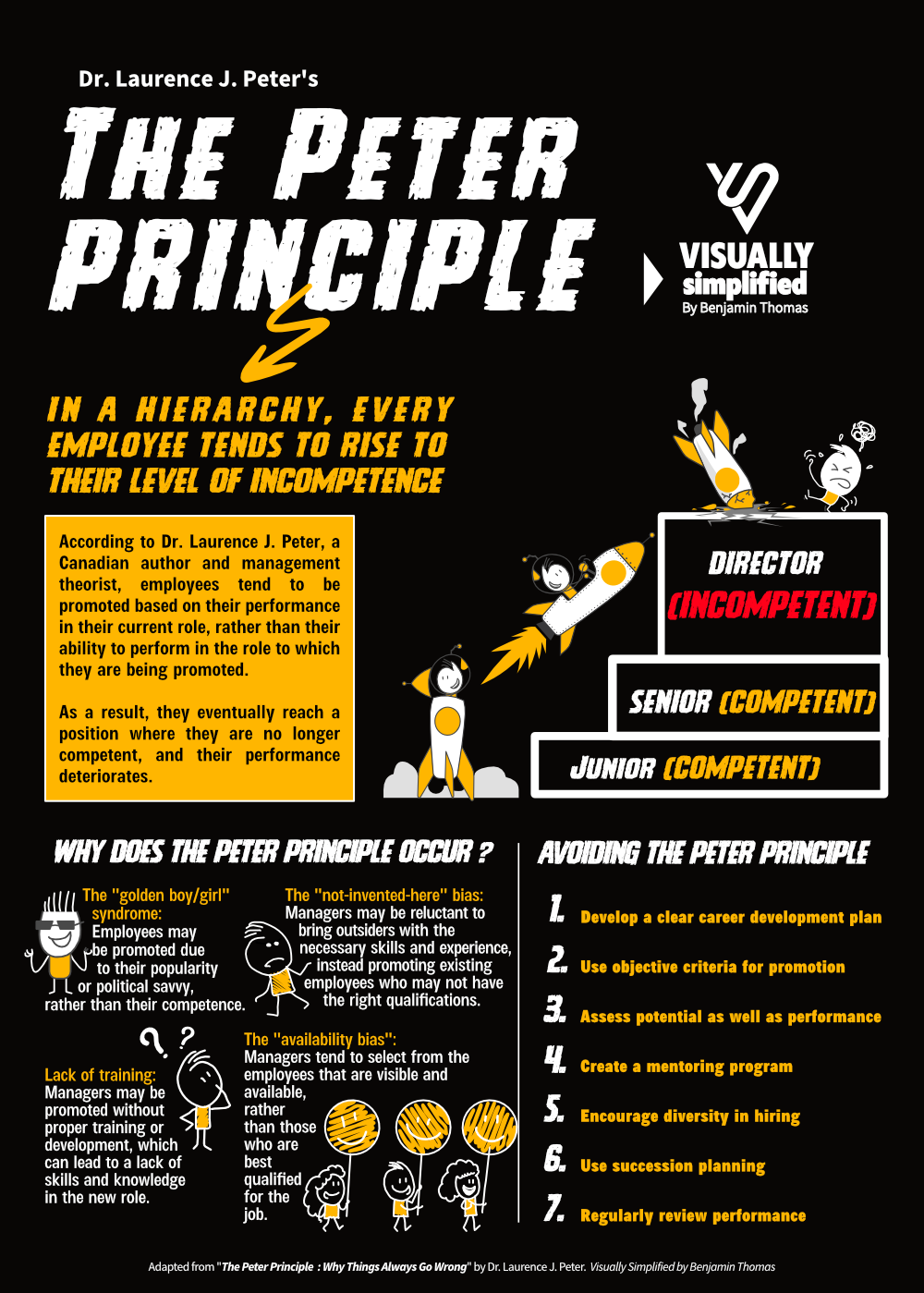The Peter Principle Explained

The Peter Principle, a concept in management theory, states that employees tend to reach their level of incompetence within a hierarchy.
Promotions are often based on performance in the current role rather than the ability to excel in the new role. Consequently, employees eventually find themselves in positions where they lack competence, leading to deteriorating performance.
Dr. Laurence J. Peter proposed this principle in his 1969 book “The Peter Principle: Why Things Always Go Wrong.”
The Peter Principle occurs in organizations due to various reasons:
- “Sink or swim” mentality: Promotions focus on current performance rather than potential for higher roles.
- “Golden boy/girl” syndrome: Popularity or political savvy, rather than competence, drives promotions.
- “Not-invented-here” bias: Managers hesitate to hire outsiders with necessary skills, instead promoting existing employees who may lack qualifications for higher roles.
- Lack of training: Managers may lack proper training upon promotion, resulting in a deficiency of skills and knowledge in the new role.
- “Comfort zone” trap: Managers resist leaving their current roles due to comfort and security.
- “Availability bias”: Managers tend to select visible and available employees over those best qualified for the job.






